
- Home
- India
- World
- Premium
- THE FEDERAL SPECIAL
- Analysis
- States
- Perspective
- Videos
- Sports
- Education
- Entertainment
- Elections
- Features
- Health
- Business
- Series
- In memoriam: Sheikh Mujibur Rahman
- Bishnoi's Men
- NEET TANGLE
- Economy Series
- Earth Day
- Kashmir’s Frozen Turbulence
- India@75
- The legend of Ramjanmabhoomi
- Liberalisation@30
- How to tame a dragon
- Celebrating biodiversity
- Farm Matters
- 50 days of solitude
- Bringing Migrants Home
- Budget 2020
- Jharkhand Votes
- The Federal Investigates
- The Federal Impact
- Vanishing Sand
- Gandhi @ 150
- Andhra Today
- Field report
- Operation Gulmarg
- Pandemic @1 Mn in India
- The Federal Year-End
- The Zero Year
- Science
- Brand studio
- Newsletter
- Elections 2024
- Events
TN Breastmilk Bank: Receivers turn donors, show thumbs down to age-old myths

Twenty-nine-year-old Gomathi Vinoth had a painful delivery in the seventh month of her pregnancy. Her newborn, weighing just 1.4 kg, needed emergency care. Due to severe pain and mental stress over her delivery and the child's health, her breastmilk secretion dried up.As the baby was admitted to the government-run Institute of Child Health (ICH) at Egmore in Chennai for treatment, Gomathi...
Twenty-nine-year-old Gomathi Vinoth had a painful delivery in the seventh month of her pregnancy. Her newborn, weighing just 1.4 kg, needed emergency care. Due to severe pain and mental stress over her delivery and the child's health, her breastmilk secretion dried up.
As the baby was admitted to the government-run Institute of Child Health (ICH) at Egmore in Chennai for treatment, Gomathi stayed in the same quarters that house Tamil Nadu’s pioneer human milk bank.
Babies born with low birth weight are prone to life-threatening infections. Jaundice and high fever are common among these babies. Doctors advise mothers to stay close to the ICU and milk bank to attend to their babies without delay. Babies are discharged once they gain a weight of 2.5 kg and undergo a final health check for infections.
Tamil Nadu established its first human milk bank a decade ago. With widespread awareness among young mothers and support from numerous breastfeeding mothers donating excess milk, the state now runs 36 such milk banks, catering to over a lakh of sick, orphaned, and needy babies every year. During the Breastfeeding Week — celebrated each year from August 1-7 — The Federal visited the pioneering bank at ICH at Egmore in Chennai, which has inspired thousands of women to combat myths and donate breastmilk with love and gratitude.
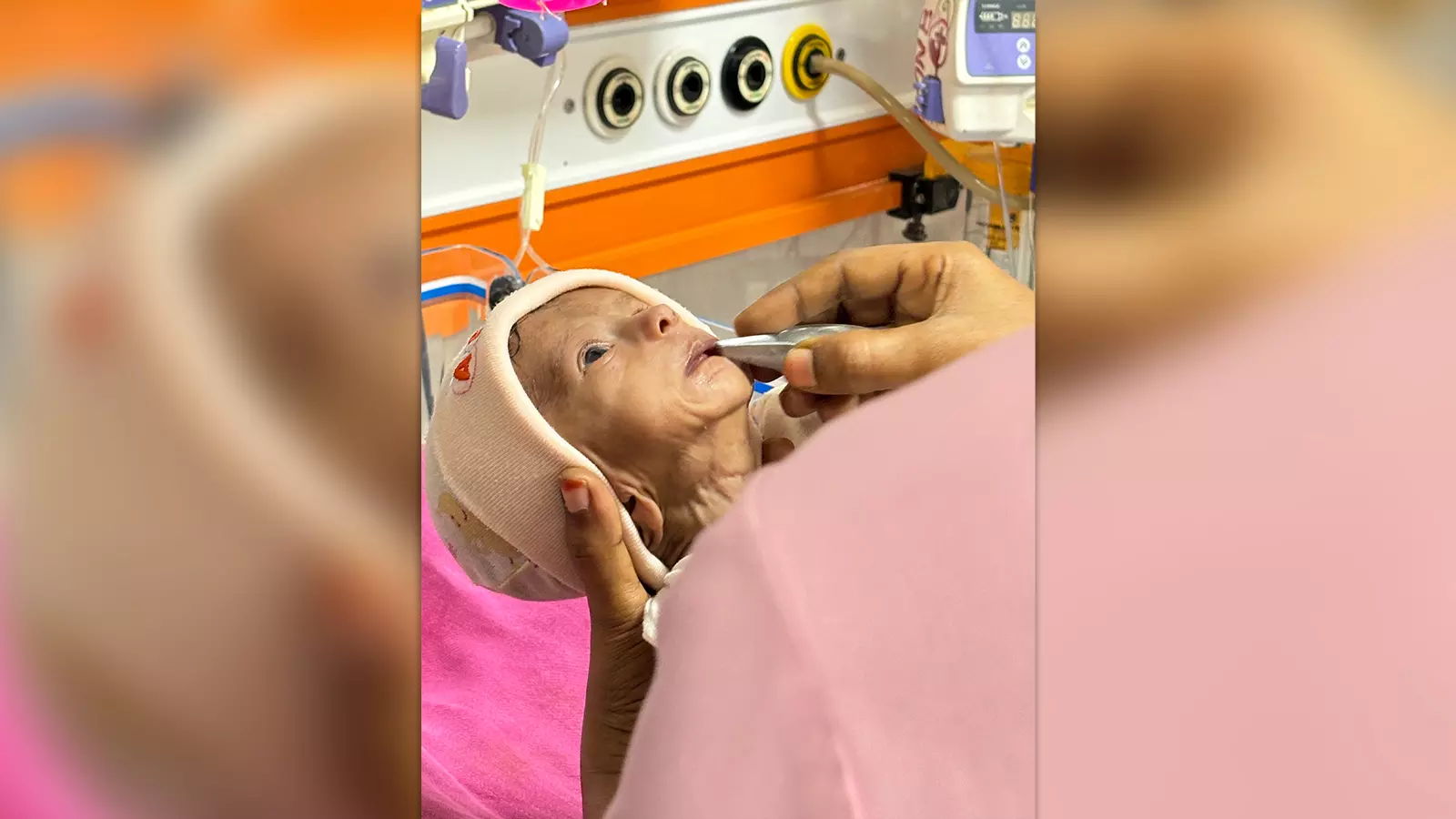
Babies born with low birth weight are prone to life-threatening infections. Photos: B. Karunakaran
Hundreds of mothers visit the ICH Hospital and milk bank with great hopes. Interestingly, when they recover from their difficult times, they often turn into donors as a symbol of gratitude. Gomathi was one such mother who accessed the milk bank to nurture her baby and, as days passed, became a donor herself.
“I was really surprised to learn about this human milk bank. Doctors told me that since I couldn’t breastfeed my baby immediately and she had to be fed through a tube, I could use the milk bank. I drew 20 milliliters a day from the bank. Interactions with other mothers encouraged me to pump milk even though the secretion was very poor. By the fourth day, my secretion improved, and I could give 5 ml of breastmilk to my baby,” Gomathi said while recounting her first week’s experience at the milk bank.
With her secretion improving and her baby gaining weight, Gomathi became a donor mother by the third week. She had heard several myths related to the donation of breastmilk but no longer believed them.
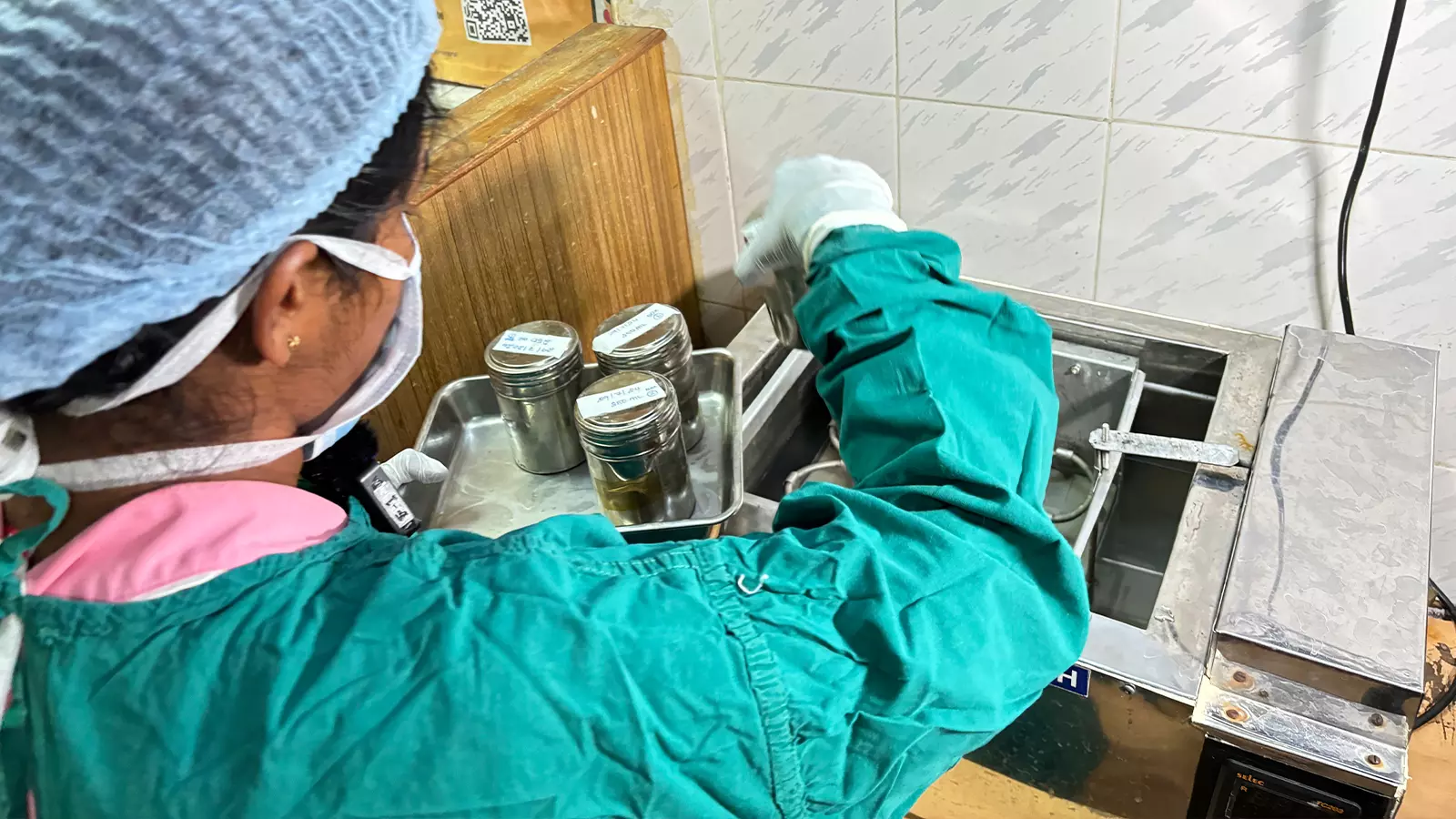
“Initially, there were hesitations, but I understand now. Breastmilk is the purest form of food for a newborn. My husband and in-laws encouraged me when I expressed my desire to donate excess milk. My baby consumes 200 ml a day now, and I’m happily donating another 100 ml to the milk bank,” she shared.
Once her baby reaches a weight of 2.5 kg, Gomathi would leave the hospital but remain a donor mother. “This is like blood donation. We are supporting a newborn and the mother. I had a series of counselling sessions on using donor milk and learned that secretion happens only when hormones trigger it, and there is no shortcut. I will spread this awareness to new mothers in my network. Secretion improves when we express milk,” said Gomathi.
Lactating mothers at the bank shared how they were surprised to learn that several tales related to breastfeeding were age-old myths. They listed and laughed out loud about how they were fooled by these myths concerning what they should eat and behave for so long.
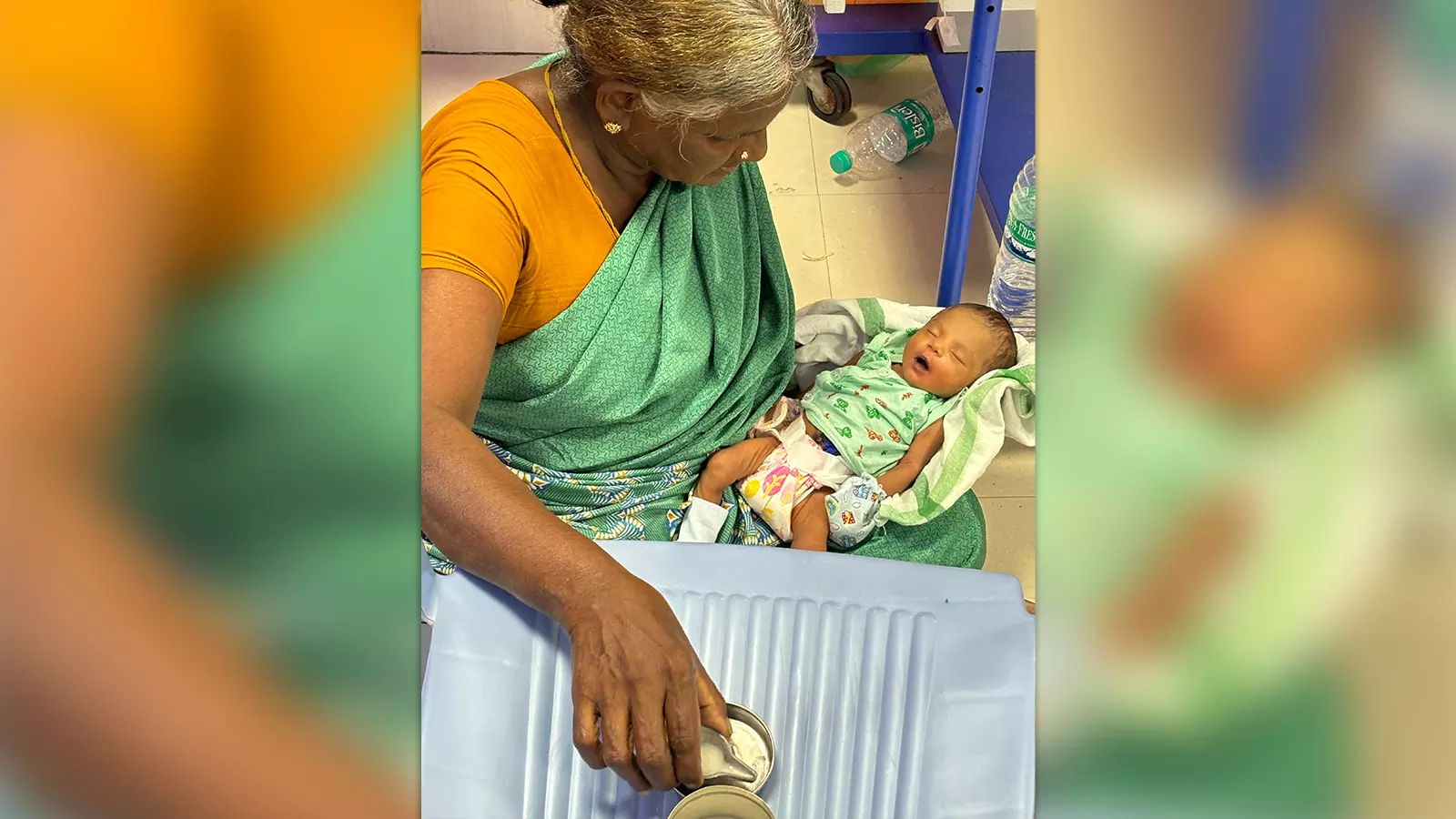
In the Neonatal Intensive Care Unit (NICU), several coloured wires and tubes hang in the incubator cubicles that have tiny pink beds for babies. The heart rate monitoring machines sound alarms and beep loudly when the heart rate is lower than normal for a tiny patient. The noise of these machines does not disturb the sleep of babies waiting to be fed through tubes, and their mothers can be seen measuring the donating milk in syringes for precision.
Kangaroo therapy
For the past month, the NICU venue in the ICH quarters has been home to 29-year-old Ramya Johnson Joy’s one-month old daughter. Both are recovering with the help of medical and nutritional support provided by the hospital.
“Doctors informed me that I could leave the hospital only when the baby reaches a weight of 2.5 kg. With a very low birth weight of 1.2 kg, my baby looked like a small doll. I sobbed day and night and counted my painful days. I suffered severe postpartum depression. I was ashamed of myself for being unable to feed my child. But I realised the benefit of the breastmilk bank as my baby was out of the ICU in a fortnight,” said Ramya Johnson Joy, who donates excess milk to the bank.
Ramya and her baby undergo kangaroo therapy during their stay. Kangaroo therapy involves ensuring skin-to-skin contact between mothers and their newborns.
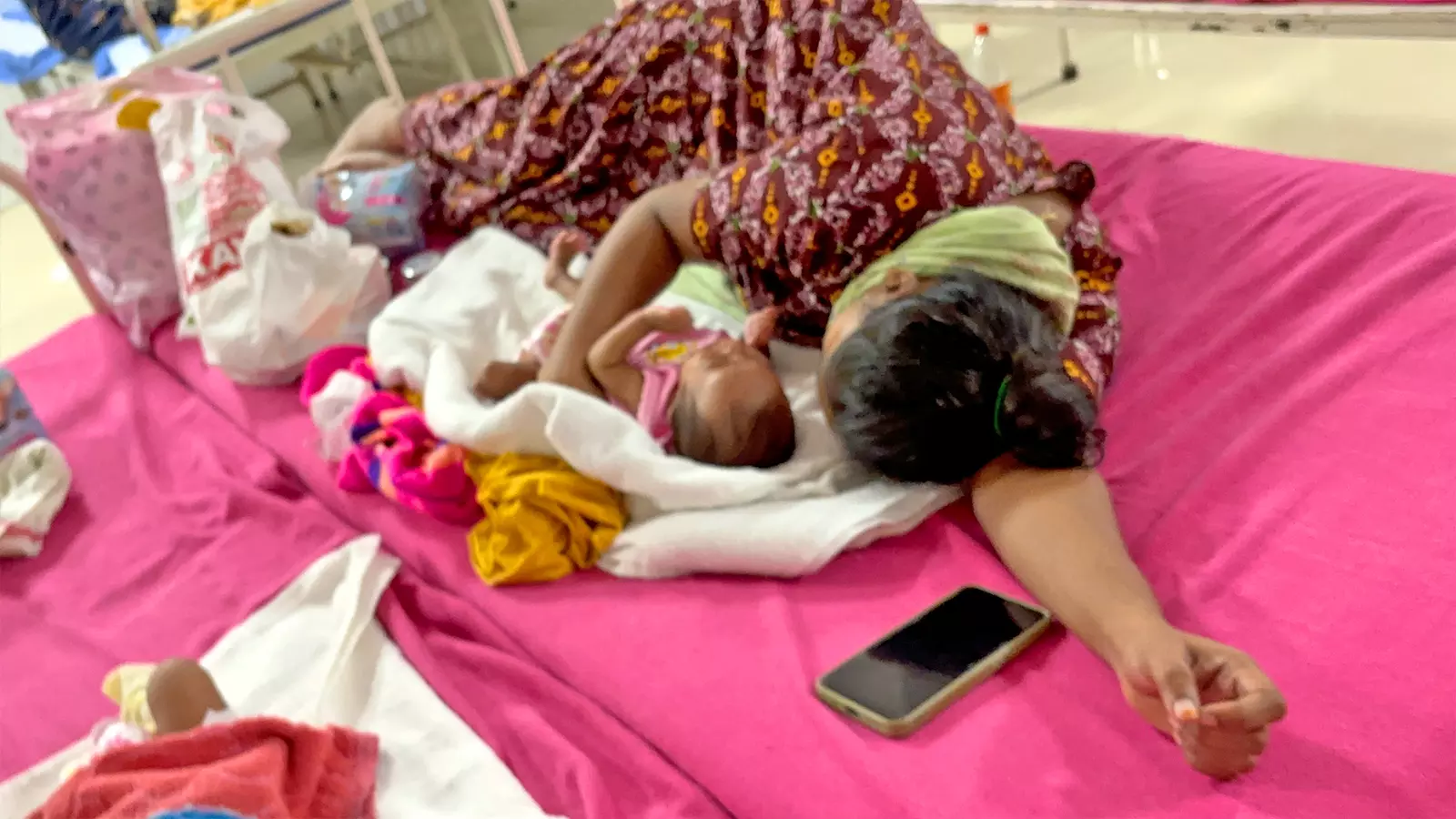
“We tie a soft cotton cloth around the mother’s neck, and make them sit in a comfortable chair. The cloth acts as a small crib. The tiny baby is placed in the cloth, and the mother can actually hold the baby on her chest for up to an hour. The baby can feel the mother’s warmth, and it allows the mother to be with the baby as it would be in the incubator for the rest of the day,” Dr T Sangeetha, who heads the milk bank, said explaining the process to The Federal.
Like Gomathi and Ramya, scores of mothers who use this milk bank stay in touch with the milk bank authorities and continue to donate even after returning home as breastfeeding mothers.
Widening the base
There is a story behind how the bank opened its ‘coffers’ for all needy babies.
In 2018, a baby was found abandoned in a drain in the Valasaravakkam neighbourhood in Chennai. The video of the baby being rescued from the drain went viral. The baby was admitted to the ICH for treatment as it was infected by drain water. Scores of lactating mothers came forward to donate milk for the baby. Until then, the milk bank was used only by in-patients, and donations came from in-patient mothers.
After the incident, the bank received donations from scores of mothers from other parts of the city. Even during the COVID-19 pandemic, this milk bank received several litres of breastmilk from mothers residing far away from the hospital. On average, the hospital supports over 800 babies every year, including pre-term babies, orphaned babies in government care homes, abandoned babies rescued by the police, and sick babies in government hospitals.
When asked about the storage of milk, doctors explained that milk collected from donors is pasteurised and stored in packets.
“Expressed milk can be stored at room temperature for 4-6 hours. It can be kept in a refrigerator for 24 hours. And when it is kept in a deep freezer, it can be used for 3-6 months. Donor mothers are provided hospital-grade breast pumps, and expressed milk is stored in stainless containers. It is then pasteurized at 62 degrees and sent for culture in a microbiology laboratory before being frozen at -20 degrees C. The frozen milk can be used for up to three months,” they explained.
Creating awareness
Dr Rema Chandramohan, director of ICH, conducts awareness programmes for lactating mothers and recognises donor mothers every year during Breastfeeding Week, observed from August 1-7.
She said donor mothers need to be motivated and assured that donating milk will not affect their own baby’s supply. Nurses counsel mothers through awareness videos and provide electric pumps to aid milk expression.
“Our aim is to educate mothers that the more they donate, the more milk their body will produce. There are many myths about donation and using donated milk. We educate and make these mothers our campaigners for breastmilk donation,” said Dr Rema.
She pointed out that milk production peaks between four to six months after childbirth. “Mothers can donate surplus milk to needy babies. NGOs help collect milk from mothers who cannot visit the bank regularly. Stress, fear, and anxiety can affect milk production, but support from doctors, nurses, family, and society can help alleviate these issues,” she said.
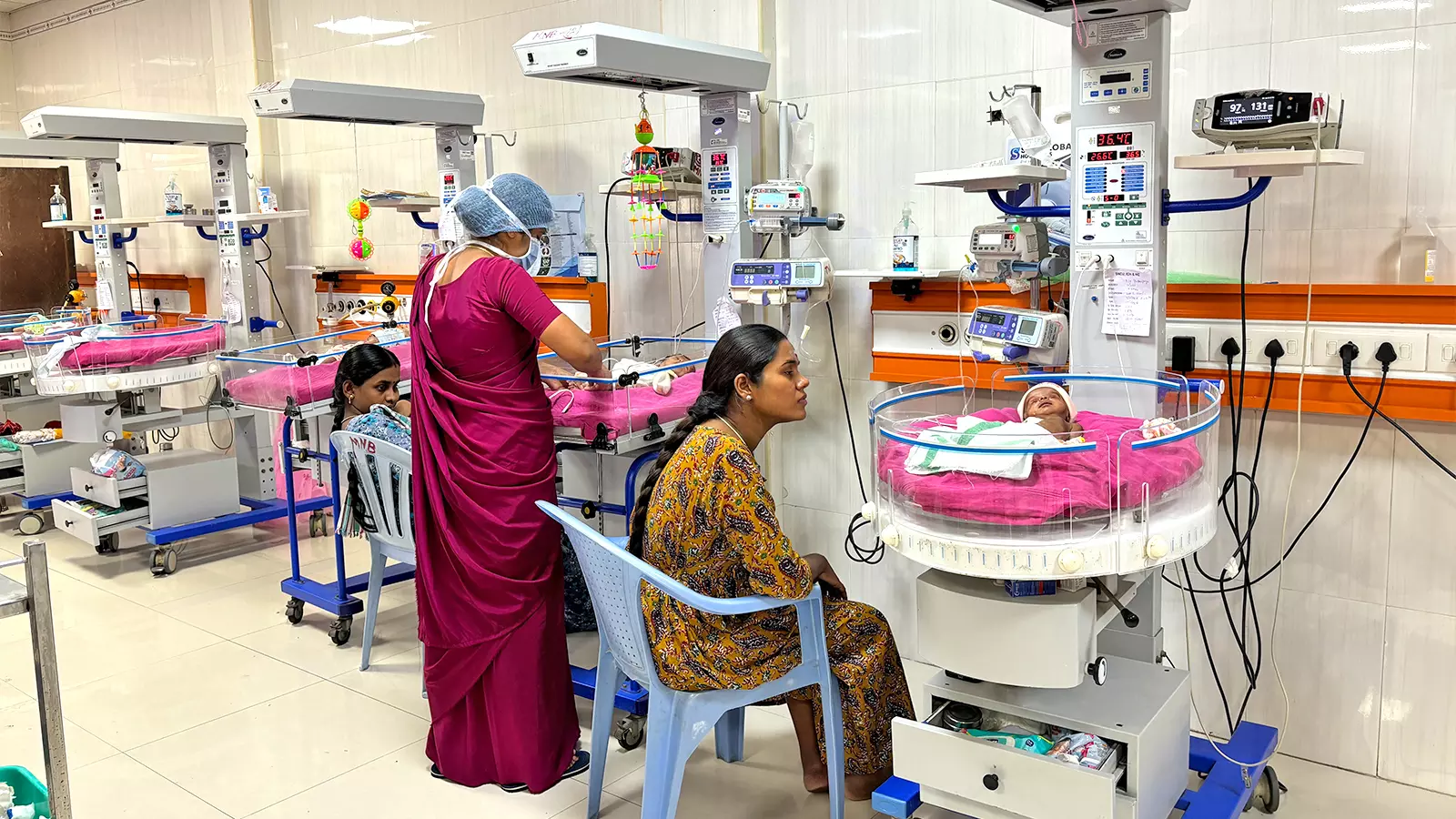
Based on the working model in ICH, 36 milk banks were set up in public sector hospitals in Tamil Nadu. There are a couple of private milk banks run by private hospitals and volunteer groups. However, the milk bank at ICH is always portrayed as a model, and its facilities and working approach are considered benchmarks for new ones.
(With inputs from Blessina Issac)
